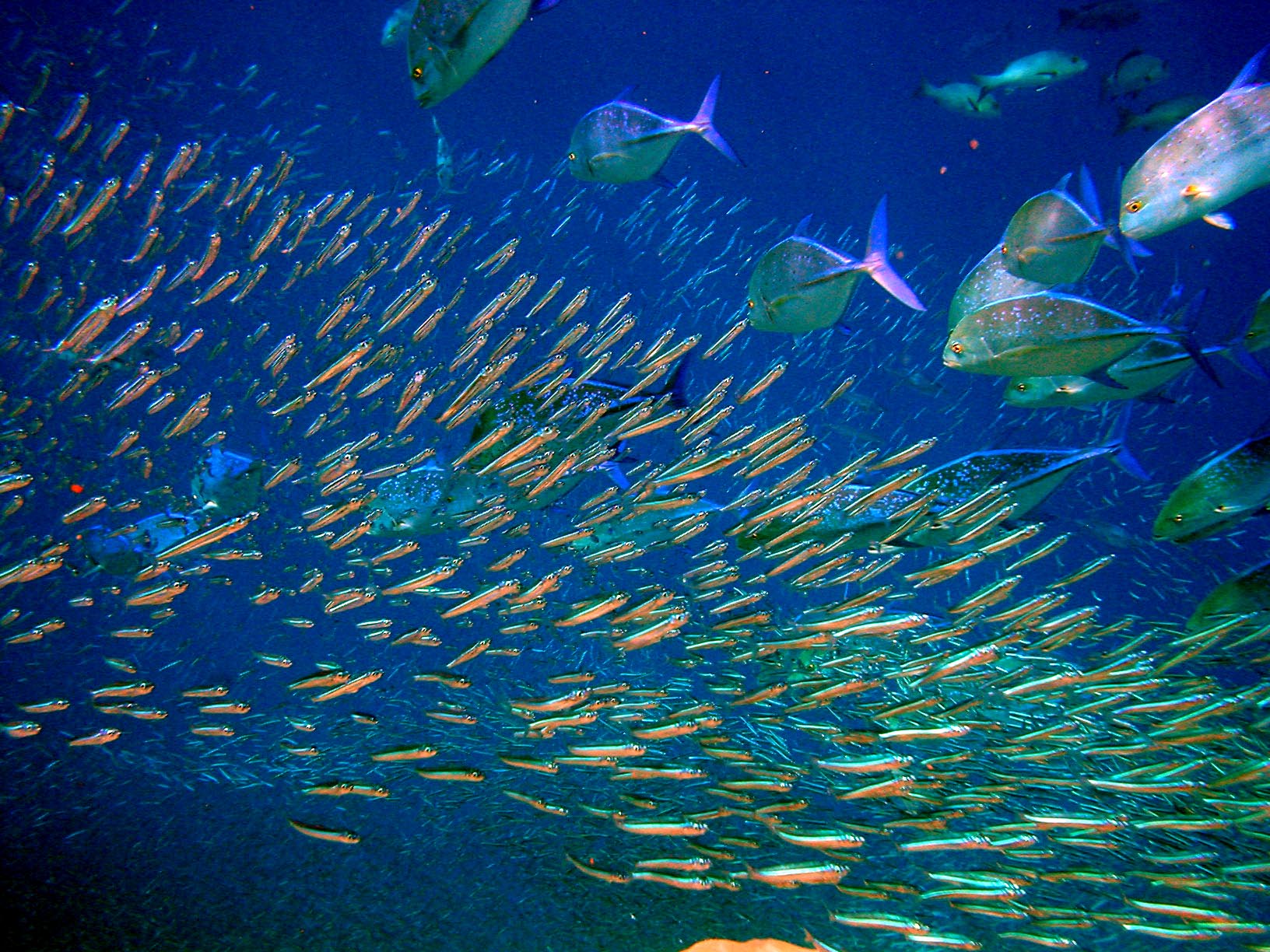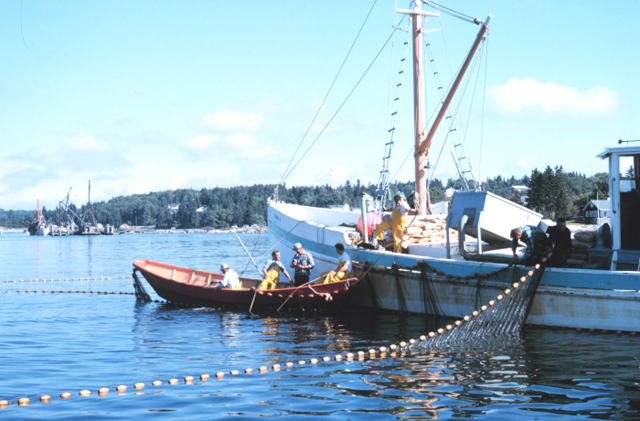Atlantic herring
Enlarge text Shrink text- Common and scientific names of fishes from the U.S. and Canada, 1991:p. 18 (Clupea harengus, Atlantic herring) p. 74 (Copeia recognized C. harengus and C. pallasi as distinct species based on a study of their biochemical genetics.)
- FishBase, Feb. 20, 2004(Clupea harengus, Atlantic herring)
- Seafood List via WWW, Feb. 20, 2004(Clupea harengus, common name: Atlantic herring, market name: Herring or Sea herring or Sild, vernacular name: Labrador herring)
Atlantic herring (Clupea harengus) is a herring in the family Clupeidae. It is one of the most abundant fish species in the world. Atlantic herrings can be found on both sides of the Atlantic Ocean, congregating in large schools. They can grow up to 45 centimetres (18 in) in length and weigh up to 1.1 kilograms (2.4 lb). They feed on copepods, krill and small fish, while their natural predators are seals, whales, cod and other larger fish. The Atlantic herring fishery has long been an important part of the economy of New England and the Atlantic provinces of Canada. This is because the fish congregate relatively near to the coast in massive schools, notably in the cold waters of the semi-enclosed Gulf of Maine and Gulf of St. Lawrence. North Atlantic herring schools have been measured up to 4 cubic kilometres (0.96 cu mi) in size, containing an estimated four billion fish.
Read more on Wikipedia >
 Topic
Topic












